We advance to the FIFA Women’s World Cup knockout phase where England faced with Cameroon. The fixture foreshadowed an England win since Lionesses came to the round of 16 as the winner of their group, whilst Cameroon were only able to reach there as the best third-place finisher in the group stages. This tactical analysis reveals how England recorded this easy 3-0 victory.
Lineups
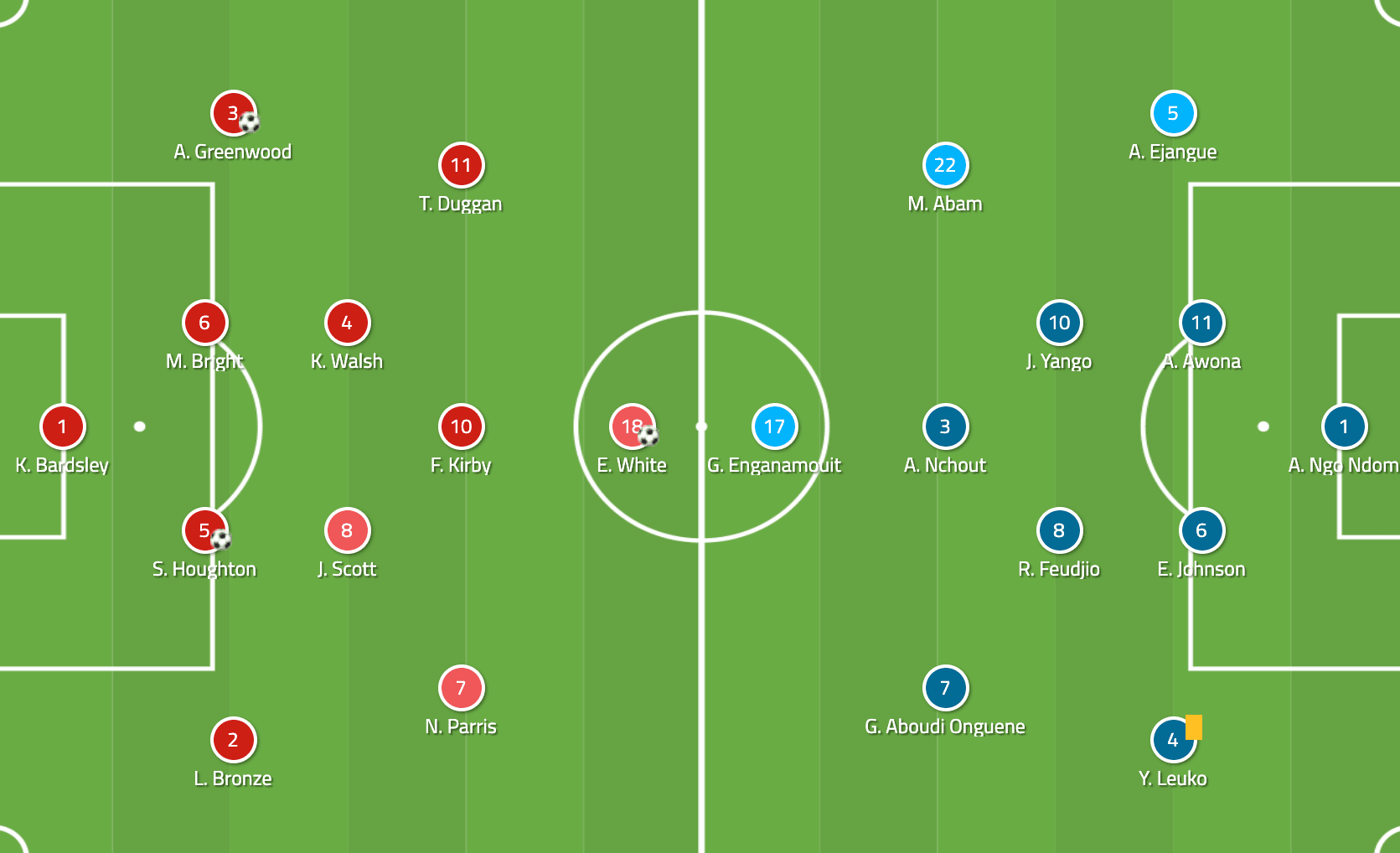
England lined up in a 4-1-4-1 formation, although it tends to morph into a 4-2-3-1 in possession. Moreover, Alex Greenwood returned to the left back position after Demi Stokes replaced her against Japan. Next to her, the usual, Lucy Bronze, Stephanie Houghton, Millie Bright were in the defence. Meanwhile, Kiera Walsh on paper deployed as a lone holding midfielder, but Jill Scott dropped and formed a double pivot, although she had the licence to push forward.
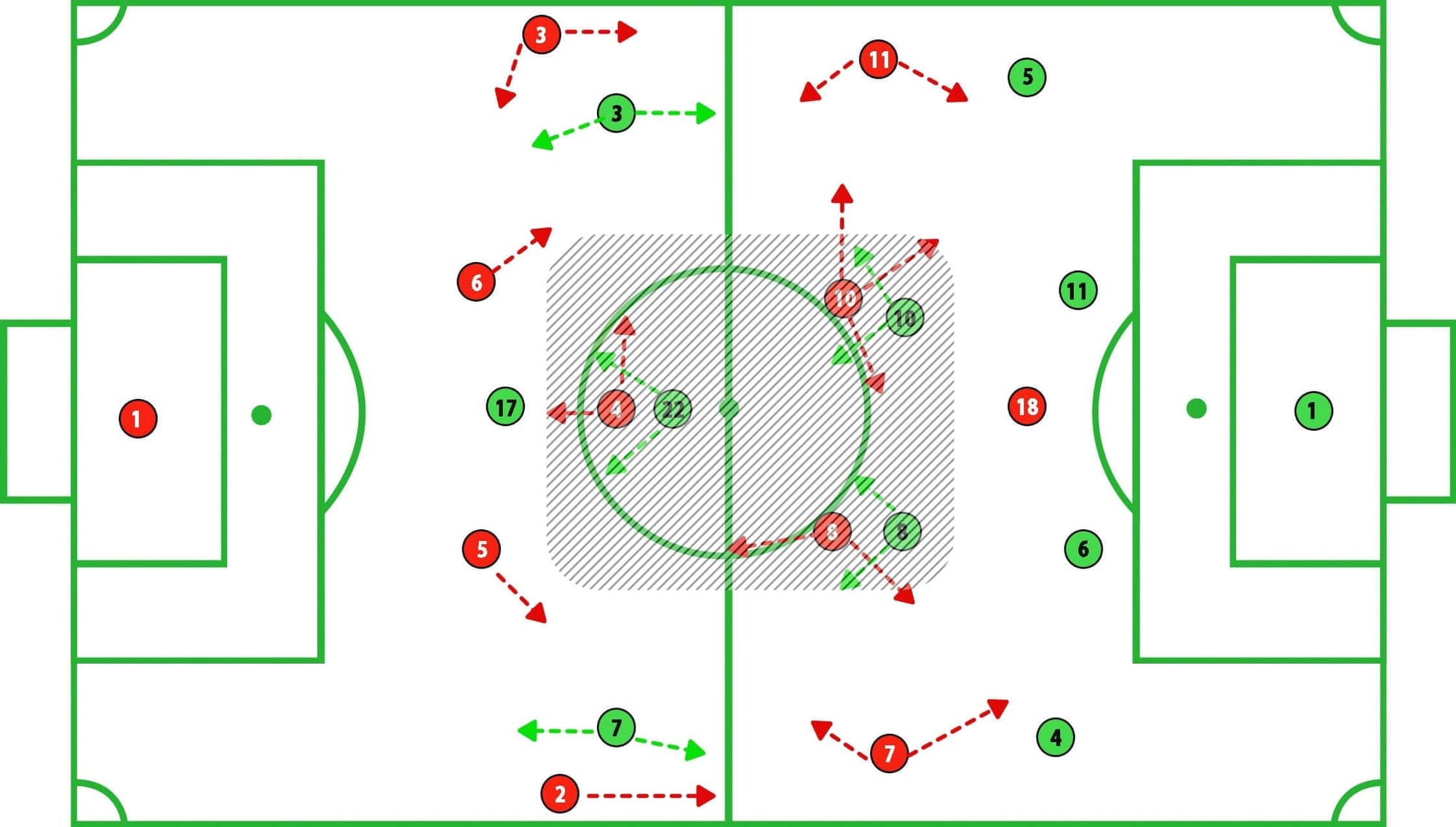
Fran Kirby played in the #10 space and often moved outwards to the left half-space.
Phil Neville chose Toni Duggan instead of Bethany Mead. Manchester City star, Nikita Parris started on the right flank but often switched position with Duggan. Lastly, Ellen White up front.
On the other hand, Cameroon looks to choose formation according to the opponent – so far they used formations like 4-3-3 and 5-4-1 – thus for against England, they played in a 4-2-3-1 to match England’s midfield.
Furthermore, there were changes in the team selection too. Aurelle Awona and Augustine Ejangue stayed in the defence like in the last game, against New Zealand. In front of the four of line, Raissa Feudjio and Jeannette Yango paired up. As opposed to the teamsheet, Michaela Abam played in the centre and Ajara Nchout in the right wing. Whilst Gabrielle Onguene on the left and Gaëlle Enganamouit as a lone striker.
England in possession, Cameroon against the ball
Lionesses dominated from the beginning, of course, this resulted in a much higher possession rate for them (67%). Cameroon wanted to form a mid-block against the ball and emphasised on counter-attacks. Therefore it was a crucial part of the game that how England were able to build out from the back.
In possession, England formation fluctuated between 4-2-3-1 and 4-3-3, mostly depends on the phase of the build-up. In the early phases, Scott occupied deeper but then she pushed up the pitch. She often moved outwards to combine with the teammates in the right wing.
For example, in here, Houghton passed to Parris who dropped then she laid it off to the advancing full-back who passes it behind Cameroon’s last line where Jill Scott arrived.
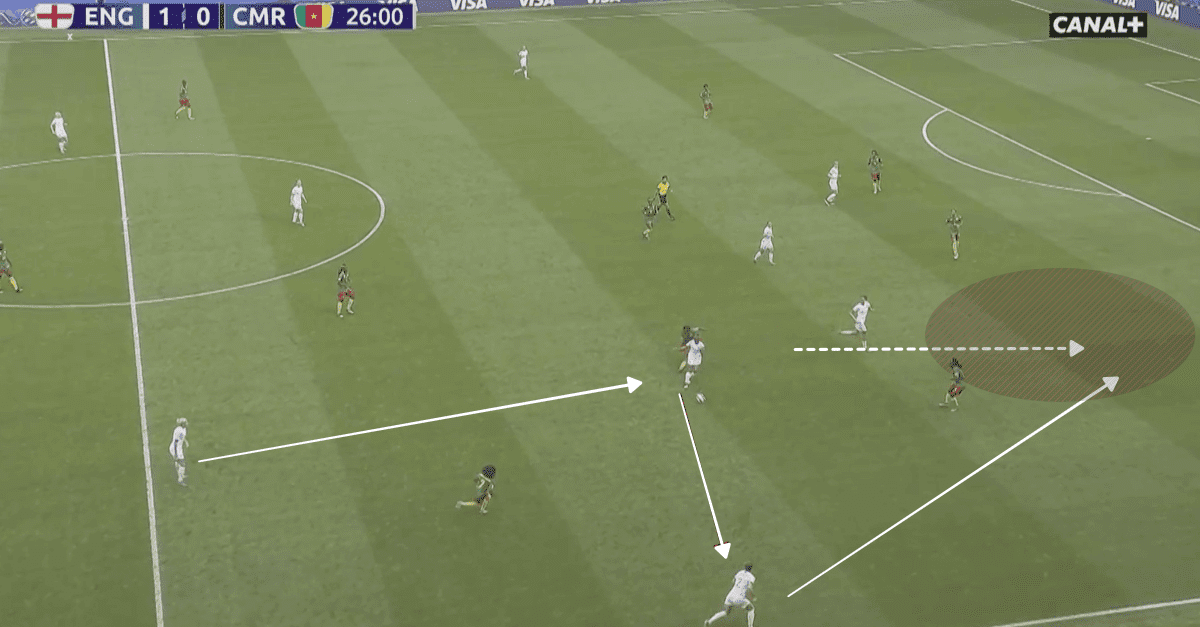
Or in this situation where Parris moved outwards, next to the touchline to offer pass option to Bronze. This dragged the opposition full-back out of position and Scott could fill the vacated space.
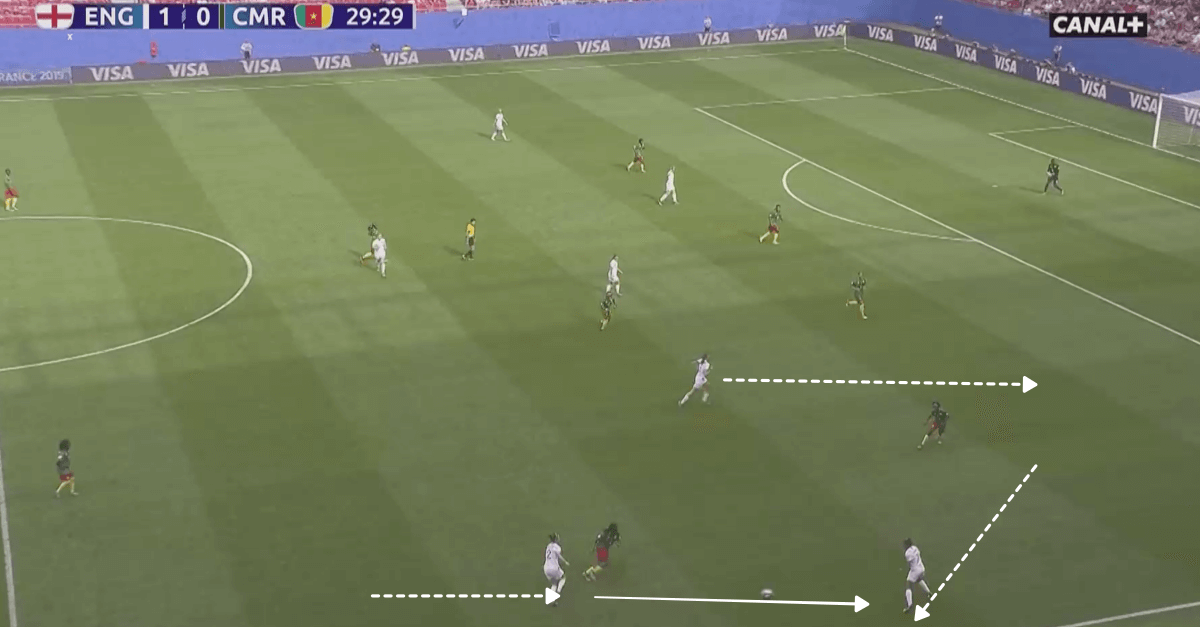
Furthermore, there were several situations where England formed a back three during the build-up. It occurred mostly after England won the ball back and recycled through the back line. As the image highlights below, Greenwood dropped deep and situationally formed a back three with Bright and Houghton. Bronze also started to drop when England lost the ball but not that deep and right after they stabilised she pushed up again.
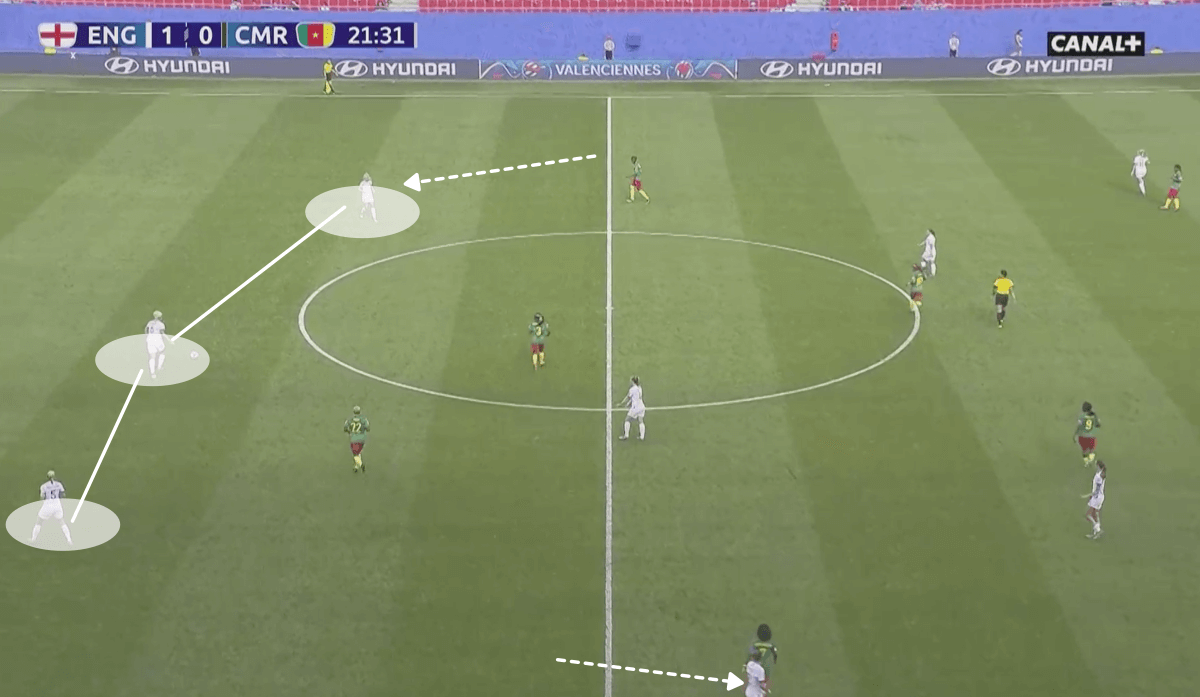
Meanwhile, Cameroon formed a 4-2-3-1 during the pressing phase, where Enganamouit looked to block the passing route between the opponent’s centre-backs and Walsh thus she did not press out aggressively. The midfielders mostly used man-marking on England’s midfielders while the wingers tasked with pressing the full-backs when they receive passes. In goal kick situations, Cameroon transformed into 4-2-4 shape as Enganamouit dropped next to Abam to closing on Scott.
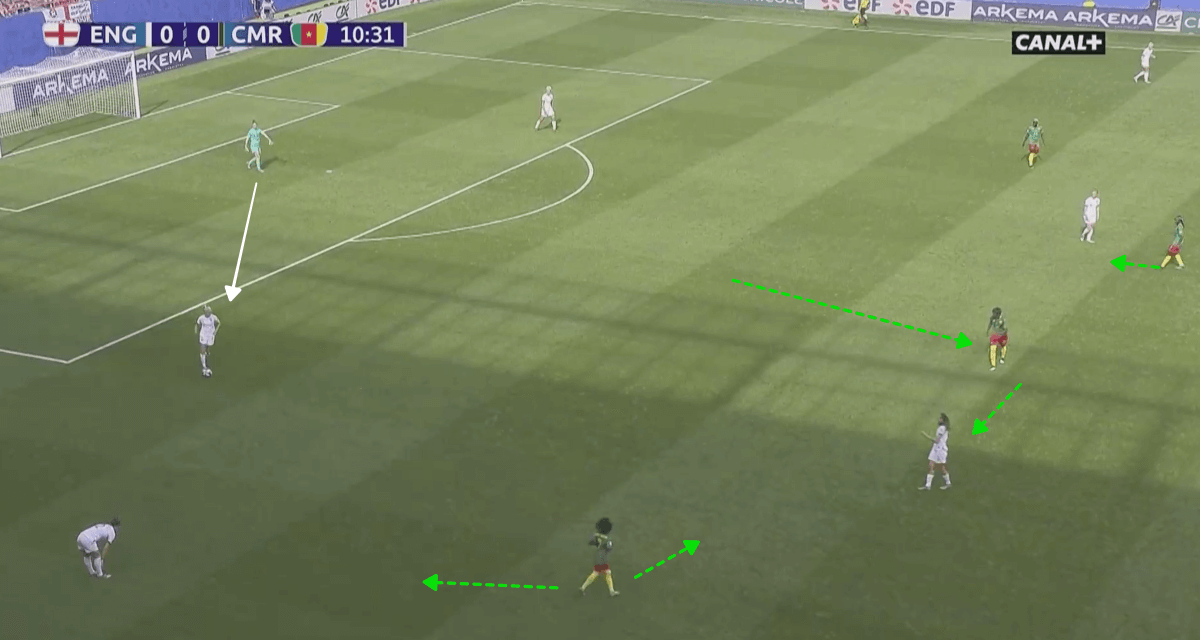
Exploiting through the half-spaces
In general, half-spaces are important zones, especially in the recent years, but in this game, it had a major role due to the fact that England’s possession play target that zone or at least often found open space there.
In the 4-2-3-1 pressing setup, Cameroon’s wingers occupied a bit wider to gain access to the full-backs. However, this caused a major structural issue for them as the half-spaces became unoccupied and open. England – in most cases – had two options to exploit this flaw.
- The centre-backs had space to drive forward on the ball. Generally, against a one-man first line (4-2-3-1, 5-4-1, 4-1-4-1 etc), central defenders have the opportunity to progress on the ball with ease, but thanks to the open half-spaces, they had even more space.
- Secondly, Phil Neville asked his wingers to drop deep to the half-spaces to receive passes. This was especially evident on the left side. Or even the centre-midfielders could receive passes there.
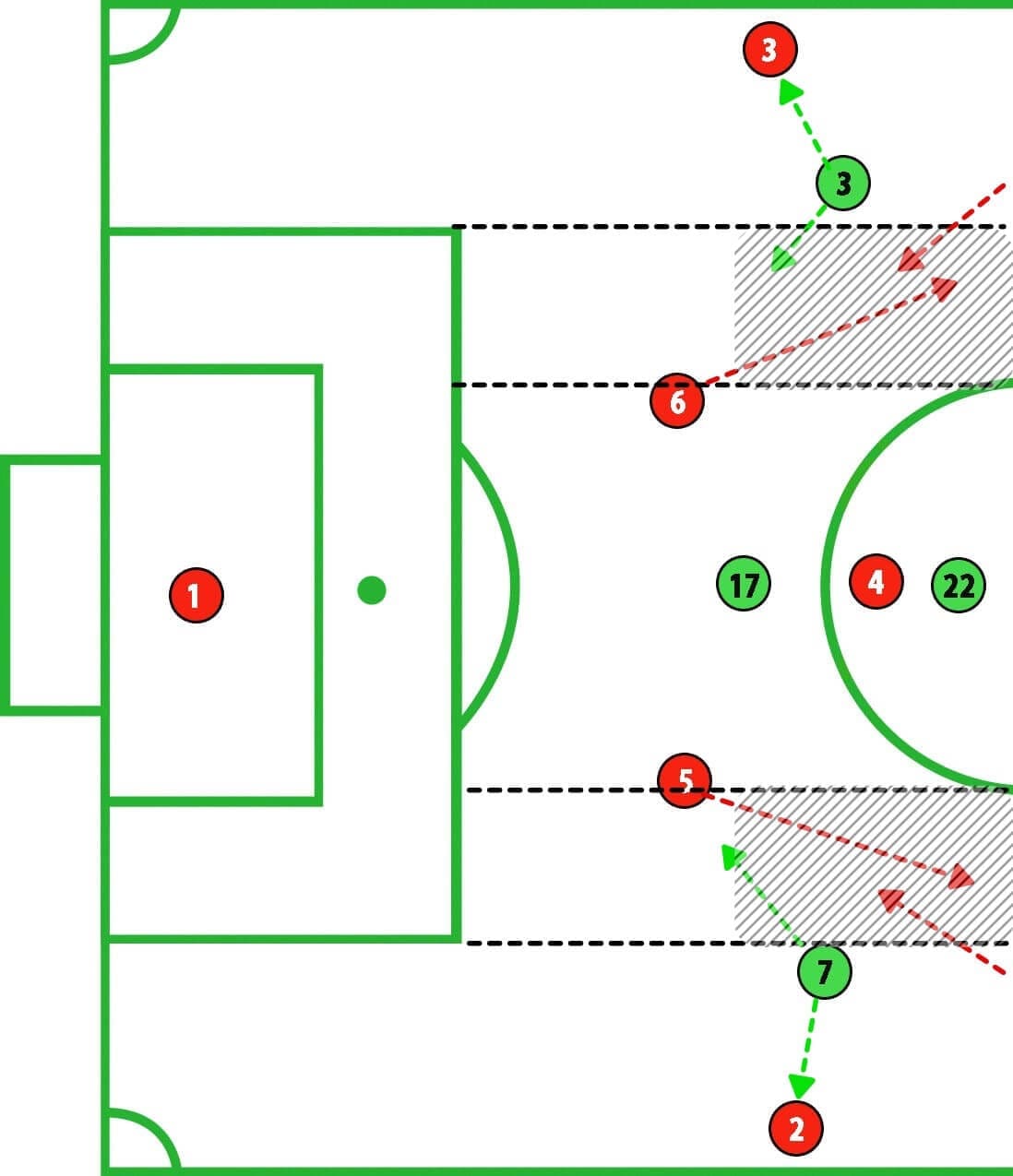
Either way, both caused a decision-making crisis for Cameroon’s wingers. If they mark the winger then the opponent would able to progress up on the half-space. If they leave the wing open then England would able to progress through their full-backs.
Let’s see some examples of that. In the first instance, Scott moved out of Enganamouit’s cover shadow to receive the ball from the centre-back.
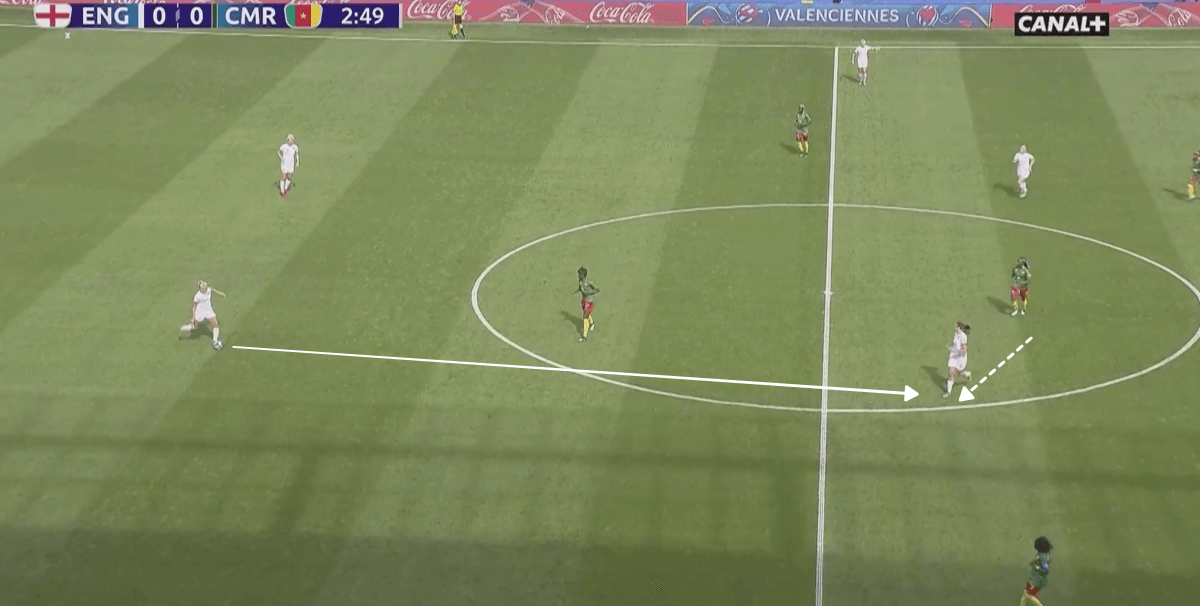
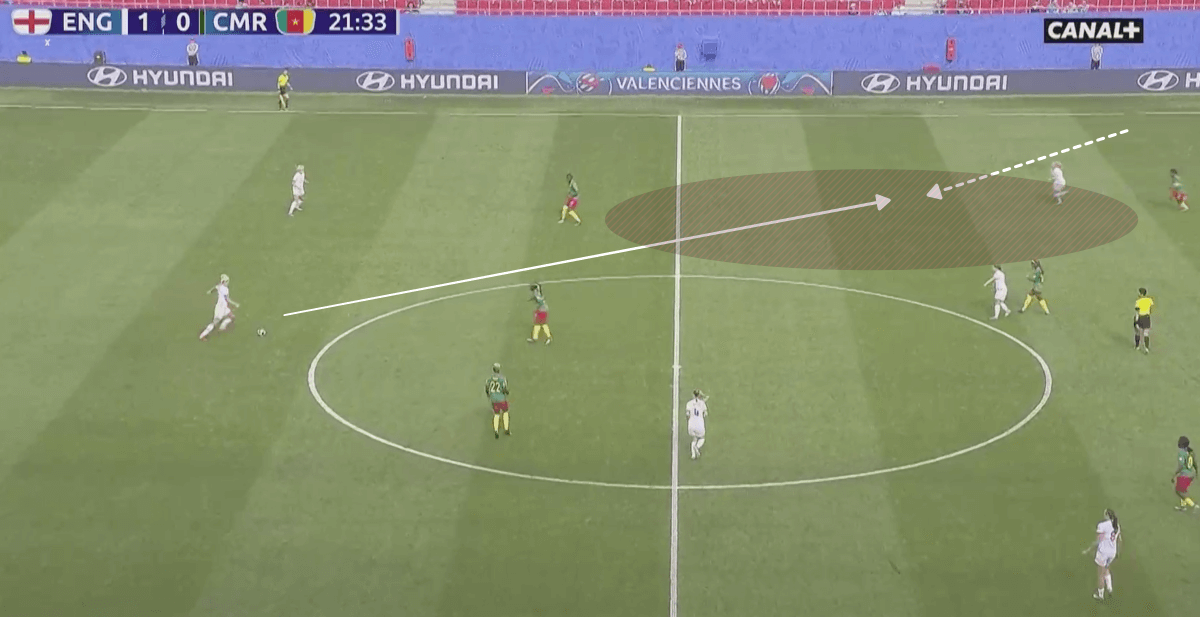
In the below example, Duggan drops into the vacated space. Walsh dropped a bit to drag the opponent out of position and open up spaces. Unfortunately, Bright chose to pass wide to the full-back.
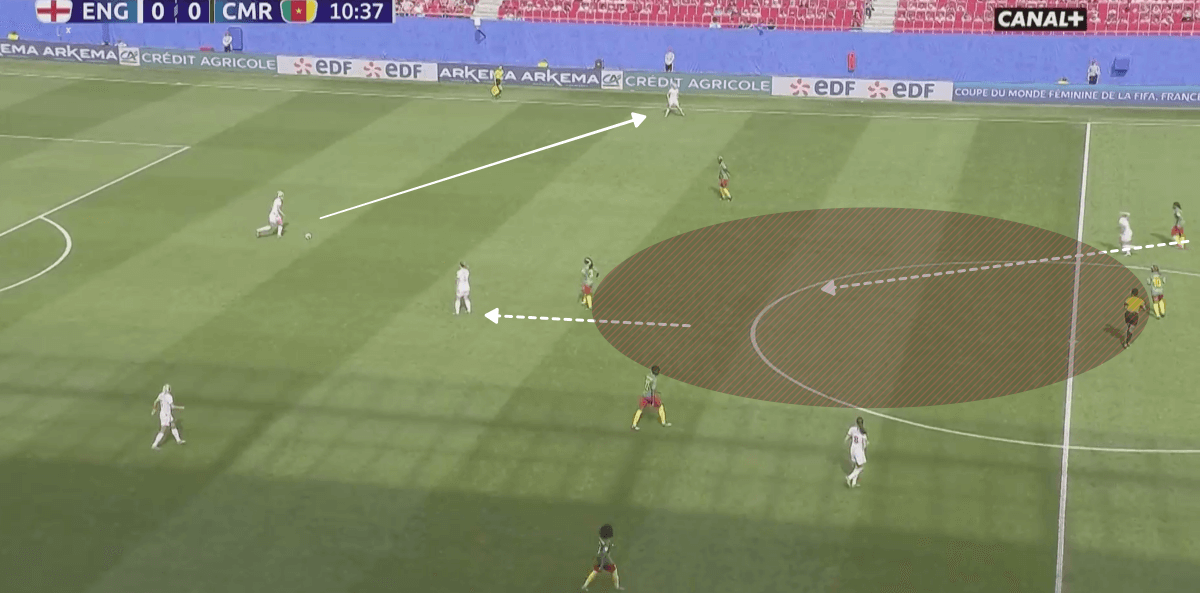
In the last case, the centre-back dribbles forward on the ball utilising the space in front of her. Then exploiting the space between the opposition winger and central midfielder.
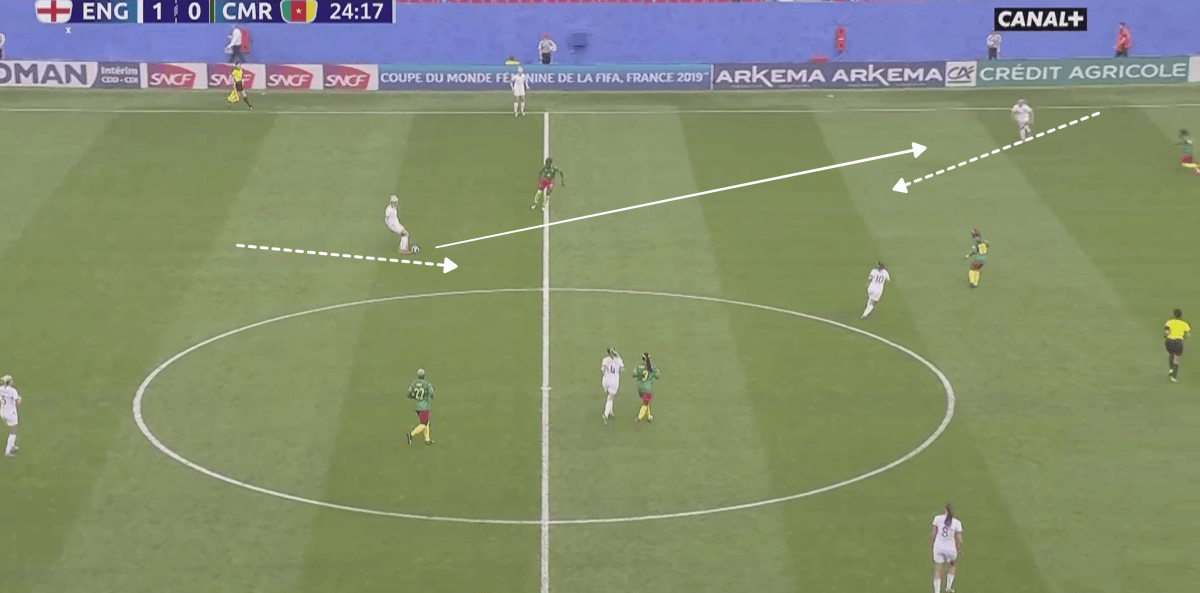
Conclusion
The clash truly revealed the quality differences between these two teams, especially in the second half, where England scored the third goal after Cameroon failed to score twice. The first was due to VAR decision and the second attempt was saved by Karen Bardsley. Cameroon did not react well thus it became a dramatic show that generated lots of material to the media. If you asked me, I would not be that judgemental towards Cameroon since truth to be told, it was hard to accept. All started with the chance that it was an opportunity to advance to quarterfinals. Then England scored the second goal the worst possible time from Cameroon’s perspective as they could not respond to that due to the halftime.
All in all, it was a difficult circumstance and where one team was able to highly overpowered the other and destroy them. Cameroon had lots of mistakes throughout the match such as imprecise passes, wrong ball control etc. Next step, Cameroon has to collect the good values and experiences from this FIFA Women’s World Cup, whilst England will face with Norway in the quarterfinals.
If you are following the FIFA Women’s World Cup 2019 then you will find our FREE tactical preview magazine the perfect compliment to the tournament. You can download it HERE – each nation is previewed and we also profile their key player and young player to watch. Enjoy!




Comments